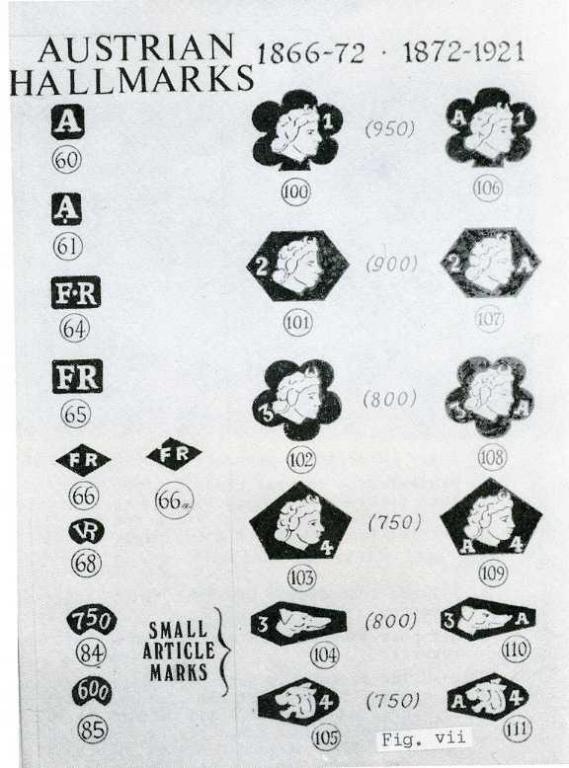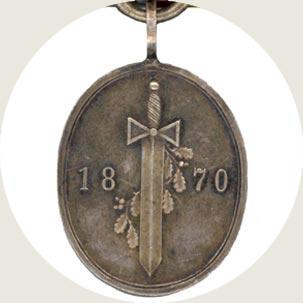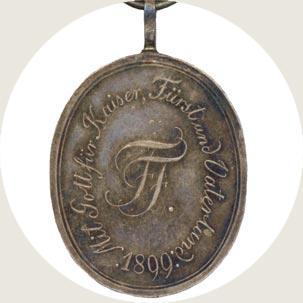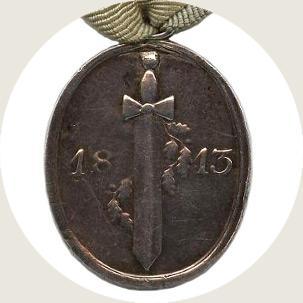
GdC26
Active Contributor-
Posts
971 -
Joined
-
Last visited
-
Days Won
7
Content Type
Profiles
Forums
Blogs
Gallery
Events
Store
Everything posted by GdC26
-
Simi, I hink you're right that the bar may have been made for collector purposes (and think so mostly because of the strange combination of decorations and the order in which they are mounted, an issue also flagged by Christophe) but why the Silver Merit cross with swords? I "read" the bar as: - EK II with 1914 Spange - WMVO knightscross; - Württemberg Friedrichsorden, knights cross (presumably 1st class) with swords; - Orden der Württembergische Krone, knights cross with swords (which I thought came before the WFO); - Baden, Orden Berthold des Ersten with Swords (?), which if correctly identified, I would expect to come after the PROA3mS - PROA3mS, which strikes me as an unusual award for a Württemberg senior officer; -Osterreich, Goldenes Verdienstkreuz mit Krone (again unusual on a foreign bar - I would expect an FJO or given rank, ÖEK); -as Christophe noted, commemorative ribbon of 1870-71 - Zentenarmedaille; _ Chinadenkmünze - Kolonialdenkmünze Charles, have you asked Helmut for his views of the bar (not exactly the thing of highest value in this particular offering), or for pics of the back?
-
The pic is not from a book, it ifs from Helmut Weitze's site: https://www.weitze.net/militaria/60/Wuerttemberg_Feldbluse_M_1910_fuer_einen_Generalmajor__358660.html. As the description mentions, the tunic (including, from memory, the ribbon bar) are featured in Baldwin and Fisher's field grey book, which shows pieces that mostly come out of the well documented, beautiful and very extensive Marshall V. Daut collection. A bit of a coy way to ask a question .... Sandro
-
The news is out on other forums, but oddly not here: sadly, fellow member Adler 1 (Karel van Bxxxxxxx) recently passed away. I did not know Karel personally, but always enjoyed hiss liberally shared insights interesting and educating. This thread showing his wonderful collection seems a fitting place to commemorate Karel, so please take a moment to commemorate him. Kind regards, Sandro
-
Interesting Kleinerrock
GdC26 replied to ccj's topic in Germany: Imperial: Uniforms, Headwear, Insignia & Personal Equipment
I think there's a mix up here - the GS kleiner Rock is not a Mecklenburg item. There are now two discussions here, one of a ribbon on another kleiner Rock, the other on hte GS kleiner Rock ...... ? -
I might be wrong, but I thought I had understood that turning point to be 1933. Up to then, imperial precedence prevailed, thereafter, different rules applied, with for example the EK II taking precedence over the MvK. The medlar shown by Laurentius is clearly post 1933 (Hindenburg Kreuz and two post 1933 DAK's), the one shown by Chris, as per his comments, clearly pre 1933. But the Bavarian order of precedence is not always that clear to me either - below are a few pre war old style ribbon bars that seem to underline that point (Luitpold before PROA and PKO, and these again before BDAK .... ?)
-
And I give the same answer I gave above, with two additions: 1 - it seems well possible that the Grand duke was entitled to wear this medal not as a recipient, but as the head of state of the Grand duchy and/or as nominal chief of its army. 2 - the troops at Loigny-Poupry were commanded by Friedrich Franz II, Friedrich Franz IV's grandfather; and 3 - the medal was instituted by Johann Anton, who served as regent after Friedrich Franz III's death until Friedrich Franz IV came of age. In other words, I would not be surprised if family ties and Friedrich Franz IV's position as archduke (as he was in 1899, even if due to his age, he did not yet reign the archduchy) led to the bestowal. Nothing unusual in royal circles, Wilhelm II wore many awards he presumably did not technically qualify for (GC EK 1914, PLM with oaks, etc.); Leopold IV Prinz of Lippe Detmold wore a special class of his house order, etc. And the 1870/71 war still held a lot of importance at the end of the 19th and the beginning of the 20th century, as it laid the basis for German unification under Wilhelm I. And then there is of course the possibility that FF IV was in fact the patron of hte Kriegerverein to which the medal was connected. Be that as it may, all of this makes much more sense than a lowly Prussian RK medal holding second place on the medlbar of the Grandduke of Mecklenburg-Schwerin. Kind regards, Sandro
-
It could be the Kriegervereinsmedaille 1899, which was instituted in 1899 to commemorate the battle of Loigny-Poupry of 2 December 1870 by the then regent of Mecklenburg Schwerin, Johann Anton, who was managing the affairs of the Duchy until Friedrich Franz came of age. https://www.ehrenzeichen-orden.de/deutsche-staaten/kriegervereinsmedaille-1899.html Design is the same as the 1813/14 award, but the year is different. According to Wiki, Franz Fedrinand in fact wore it. See https://en.wikipedia.org/wiki/Frederick_Francis_IV,_Grand_Duke_of_Mecklenburg-Schwerin https://www.ehrenzeichen-orden.de/deutsche-staaten/kriegervereinsmedaille-1899.html
-
I don't think so. Wrong place on the bar, there is no Geneva cross visible, and 2nd and 3rd class are way too low for a grand duke. And the decoration is clearly oval in shape, not round - see the pic from my collection below, taken from a different angle. I would need to check, but it seems well possible that the Grand duke was entitled to wear this medal in gold not as a recipient, but as the head of state of the Grand duchy and/or as nominal chief of its army. A further pic, now from the web. The medal clearly is oval in shape, although the obverse seems a bit different from that of the Verdienstmedaille. Clearly not a Red Cross medal, in any event. I'll get out the books as time permits and will see what I can find.
-
Thanks Laurentius. Your comments prompted me to check the pic again, and I think you're right that this is not the Jubiläumsdenkmünze. But I also don't think this is hte Prussian Red Cross medal - wrong postion on hte bar, and too low for the archduke (without enamel, we're talking third class here). Studying hte pic again I seemed to notice the medal at hand is oval. Since given its prominent place on hte bar, this is likely a Mecklenburg Schwerin award, I was wondering if nr. 2 could be the Goldene Militär Verdienstmedaille 1813/14? I could not find a pic of a gold one, but here is a link to the silver version: https://www.ehrenzeichen-orden.de/deutsche-staaten/silberne-militar-verdienstmedaille-fur-1813-1815.html Kind regards, Sandro
-
Kleiner Rock
GdC26 replied to dante's topic in Germany: Imperial: Uniforms, Headwear, Insignia & Personal Equipment
https://www.weitze.net/militaria/61/Preussen_nbsp_1_Weltkrieg_feldgraue_Litewka_M_1915_fuer_einen_Offizier_im_Regiment_Jaeger_zu_Pferde_Nr_10__351761.html Preußen 1. Weltkrieg feldgraue Litewka M 1915 für einen Offizier im Regiment Jäger zu Pferde Nr. 10 Friedensstandort Angerburg/Goldap. Kleiner Rock aus feldgrauem Tuch, Knopfleiste, Ärmelaufschläge und Klappkragen mit roten Vorstößen. Der Resedagrüne Kragen wohl mal fast abgerissen und mit alter, größerer Reparatur. Auf dem Kragen grüne Patten mit gelben Vorstoß. Auf den Schultern eingenäht die Schulterstücke für einen Leutnant, mit gelber Tuchunterlage. Auf der Brust Schlaufen für Orden/Auszeichnungen. Innen mit olivgrünem Seidenfutter. Getragenes Stück, der Kragen stark repariert, weitere Reparaturen an beiden Ärmeln und am Rücken. Zustand 2-. Ein seltenes Stück. Die Farbkombination der Patten auf dem Kragen entspricht normalerweise der Farbkombination der Tuchunterlagen der Schulterstücke. Vorschriftsmäßig wären für den Rock die Schulterstücke mit grüner Tuchunterlage mit gelben Vorstößen. Die Schulterstücke sind aber alt vernäht. Warum der Offizier nur "einfache" Schulterstücke trug, ist nicht bekannt. -
David, DIENST- UND RANGABZEICHEN DER OFFIZIERE UND BEAMTEN der Königlich Bayerischen Armee 1806 bis 1918. W. Seibold / G. M. Schulz. 174 Seiten mit hunderten farbigen Abbildungen, Großformat. Kind regards, Sandro A further book in the same series (issued by the Bayerische Armeemuseum in Ingolstadt many moons ago) deals with headgear of the Bavarian army. I have referenced that book in a recent discussion with Claudio on a Bavarian general's pickelhaube. I think if you search a bit you can still find both excellent references for around € 50 each. BTW, thankscfor your kind words Bayern. Kind regards, Sandro




.thumb.jpeg.dd8822705163e6565fde1a8d8a270f75.jpeg)


